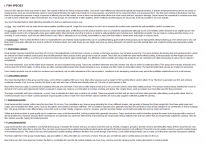Artisanal Fish Smoking
Artisanal fish smoking is a heat drying process. The heat is typically provided by an open wood fire, over which the fish are placed. The use of fire imparts a smoke flavour and affects the colour of the final products, which are usually light to dark brown. Various designs of traditional smoking kiln are used to house the fire and contain the fish.
The smoking process and product characteristics are affected by the type of fuelwood used and the duration of the smoking process. The dryness or moisture content of final products varies. Fish which has been smoked for a long duration (2 to 3 days) will have a low moisture content of 10 to 15% and a potential shelf life of 6 to 9 months.
Artisanal fish smoking is practiced in many tropical countries, particularly in Africa, and is a low cost form of preservation. Both marine and inland fish are smoked. Fish are either left whole, split or cut into pieces prior to smoking.
Food loss and waste (FLW) occurs because of the use of poor quality raw material (poor quality in poor quality out). Fresh fish which have suffered quality deterioration or partial spoilage before being processed tend to give final products which break easily. Breakage is exacerbated after processing by poor handling, packaging and transport.
Fish burnt during processing and fish falling into the fire (droppers) is another cause of FLW. Uneven smoking can cause some product to be downgraded and sold for a lower price for example over smoked products. FLW can increase if processing capacity is insufficient to cope with high volume landings which lead to delays in smoking and quality deterioration of raw material.
Insect infestation (Dermestes spp, Necorbia spp), attack by animal pests and mould growth cause loss and waste during storage as well as rejections in markets. Additionally, the high temperatures the fish can be subjected to during smoking (up to 150°C) is linked to nutritional loss, particularly the loss of protein due to the denaturation of amino acids such as lysine.
Key Publications
Small scale processing of fish Types of fish species, fish products, processing technologies, processing methods, and suggestions for avoiding spoilage before, during and after processing, are discussed. This publication gives particular regard to small-scale producers in developing countries. | |
A Review on Post-Harvest Losses in Artisanal Fisheries of Some African Countries Detailed description of dried fish production and storage. |
More Resources
More Resources
27 February 2024
31 October 2023
05 September 2023













